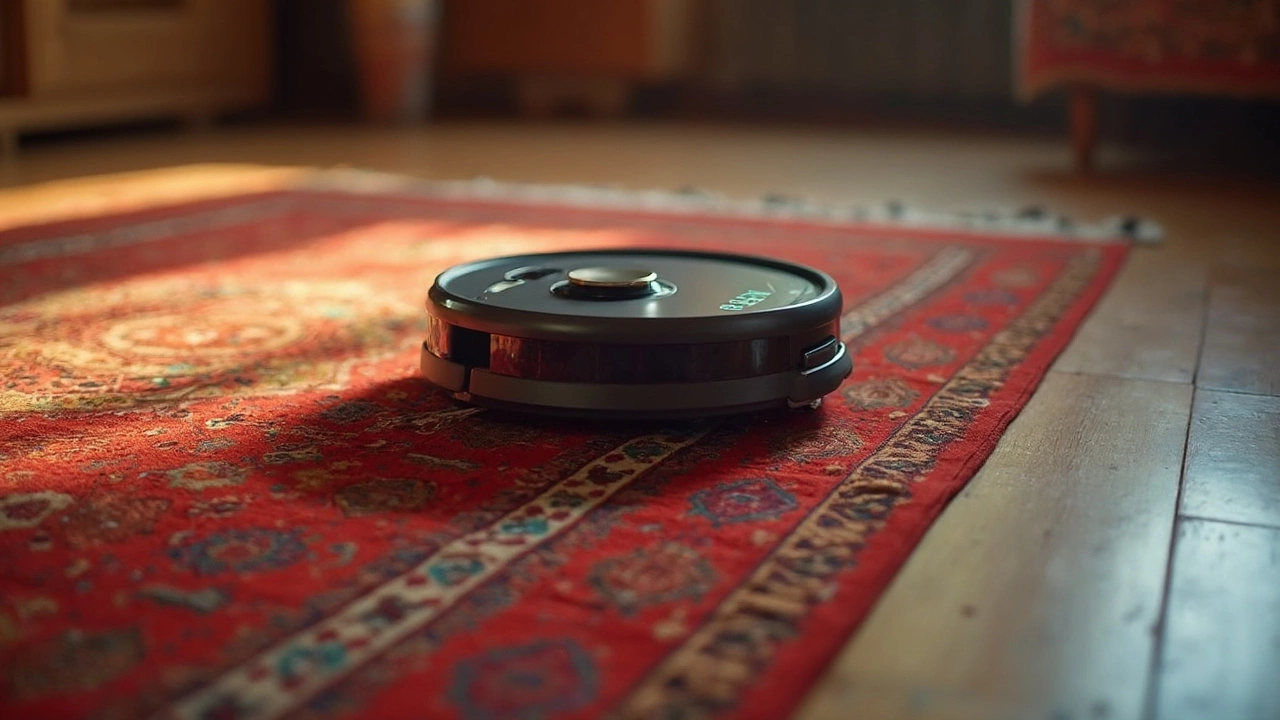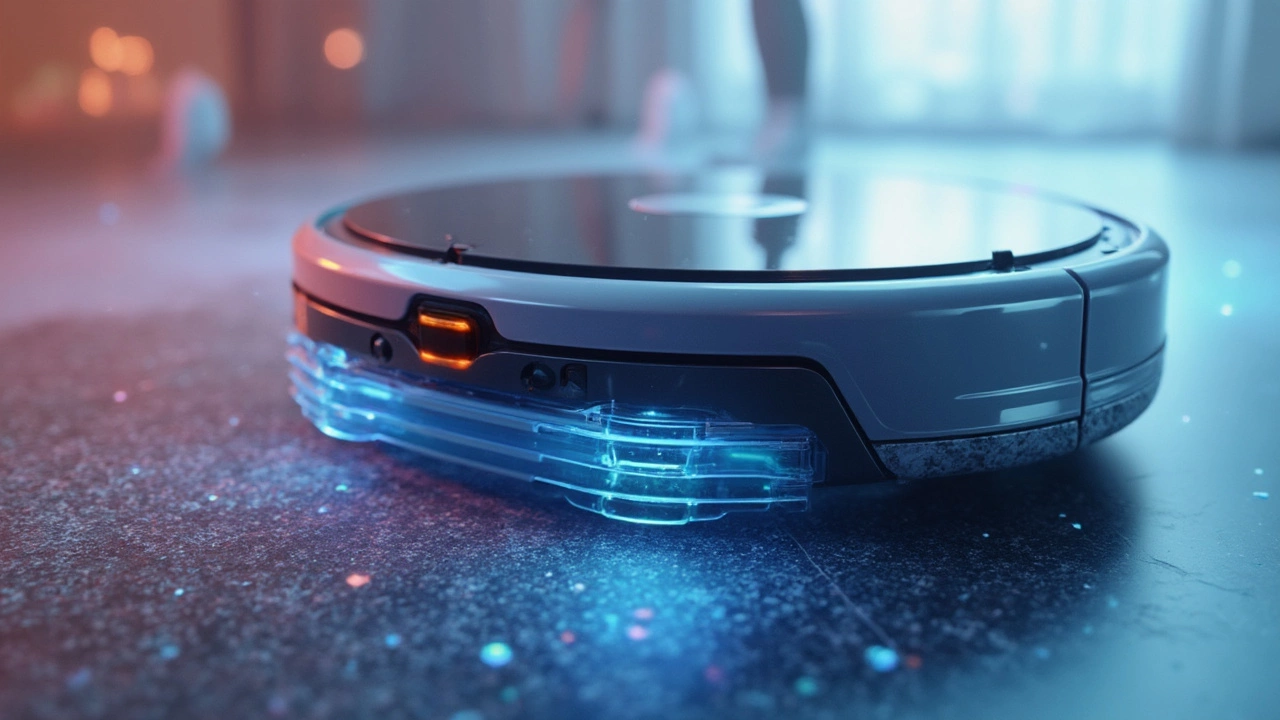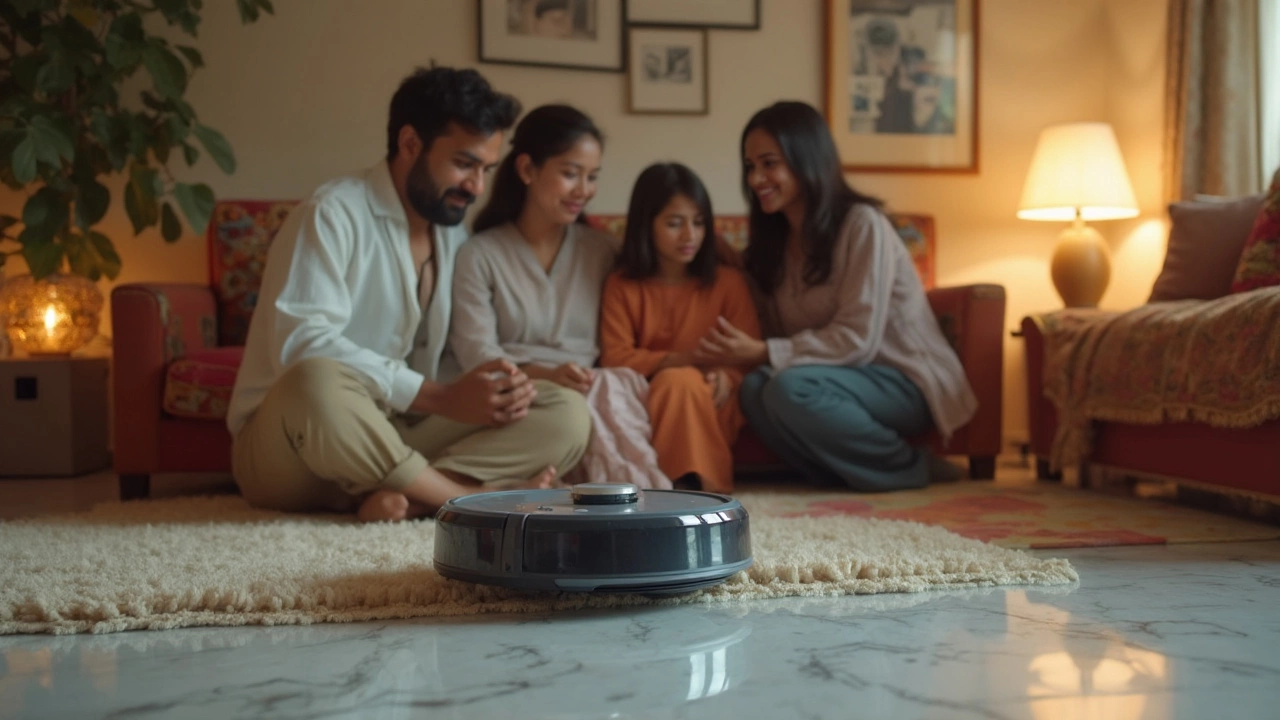
Have you ever found yourself wondering if your robot vacuum can handle moving from your kitchen's shiny tiles to that fluffy carpet in the living room? You're not alone. Many folks question whether these little cleaning robots can adapt to different surfaces without missing a beat, and the good news is, most of them can.
Robot vacuums are designed with sensors and wheels that adjust depending on the surface. The trick lies in their ability to detect changes in height and texture, ensuring they seamlessly switch from hard floors to carpets. Some even have modes to adjust suction power when transitioning to a thicker carpet, which keeps your floors extra clean.
When shopping for a robot vacuum, it's crucial to consider features like adjustable suction and specialized brushes. These can make a world of difference in handling different floor types efficiently. Investing in a model with advanced navigation technology can also help prevent it from getting stuck or failing to clean certain areas.
Keep an eye on our upcoming sections where we dive deeper into these features, giving you tips and advice on choosing the right model and maximizing its efficiency for a spotless home.
- Understanding Robot Vacuum Capabilities
- Technology Behind Surface Transitions
- Features to Look For
- Maximizing Efficiency
- Recommended Models
Understanding Robot Vacuum Capabilities
Robot vacuums have come a long way since their early days. Today, they're engineered to handle multiple surfaces, knowing when to switch gears as they move. But how exactly do they do this wizardry?
To begin with, your average robot vacuum is equipped with a host of sensors underneath. These sensors help the vacuum understand its environment, like noticing when it rolls from hardwood to carpet. That's when it may increase its suction power to tackle thicker fibers or slow down to ensure a thorough clean.
Sensors Making It Happen
Most modern models boast cliff sensors to prevent falls, edge sensors for navigating room perimeters, and even some dirt sensors that tell the vacuum to go over particularly grimy patches a couple of times. Additionally, they have obstacle sensors helping them dodge furniture.
Wheels of Change
Ever notice those big wheels? They're not just for show. The wheels are crucial, lifting the vacuum for carpets or lowering it on hard floors, maintaining proper balance for efficient cleaning.
Smart Space Mapping
The cherry on top is the ability of some high-end robot vacuums to create maps of your home. They memorize furniture placement and preferred routes for optimized cleaning.
A Quick Peek at the Market
| Brand | Surface Adaptability (out of 10) |
|---|---|
| Roomba | 9 |
| Roborock | 8 |
| Eufy | 7 |
Understanding these capabilities can really help when you're in the market looking for one that suits your home's specific needs. In the next sections, we'll chat about the technology behind these cool transitions and what you should keep an eye on when buying.
Technology Behind Surface Transitions
Understanding the magic of how a robot vacuum seamlessly moves from hardwood to carpet can feel like diving into a scene from a sci-fi movie. But there's real, practical technology at play here. These vacuums use a combination of sensors, algorithms, and wheels designed for mobility and adaptability.
Sensors and Detection
Most modern robot vacuums come equipped with multiple sensors. These sensors are like the eyes and ears of the device, helping it detect what's underfoot. Infrared sensors are especially common—they help the vacuum identify obstacles and changes in terrain. When it rolls over a carpet, the sensors pick up the increased resistance, signaling the vacuum to alter its operation mode.
Suction Adjustment and Brush Design
An important trait of a good carpet vacuum is its ability to adjust suction power. On hard floors, a lower setting might suffice, but thick carpets demand more oomph. Some models smartly increase their suction when they sense a carpet, ensuring all that dirt gets picked up.
The brush design also matters. Rubber brushes or those with adjustable bristles can dig deeper into carpet fibers without damaging them. They can also handle the smooth glide needed for hardwood floors.
Navigation Algorithms
The heart of any robot vacuum is its navigation system. Advanced algorithms map out your space, recognizing different areas and planning the best cleaning path. This tech ensures that transitions between surfaces are as smooth as possible, avoiding any awkward bumps or getting stuck.
For those curious about stats, a study shows that nearly 85% of newer robot vacuum models come with adaptive height and suction features, significantly improving their performance on mixed-surface homes.
Why it Matters for You
So, what does this mean for you? If you're shopping for a new cleaning gadget, look for features like height adjustment, smart sensors, and advanced mapping tech. These will ensure your home gets squeaky clean, no matter the floor type.
All these technologies work together to ensure that your home cleaning is thorough, regardless of whether you're working with plush carpets or sleek tiles. So next time you see your robot vacuum at work, remember it's not just a simple machine—it's a piece of engineering genius!

Features to Look For
So, you're in the market for a robot vacuum that can seamlessly glide from your hardwood floors to your cozy living room carpet. What are the key features you should keep an eye out for? Let's break it down.
Suction Power
The first thing to consider is suction power. A vacuum with adjustable suction can be a game changer, especially when dealing with transitions from hard floors to carpets. Look for models with suction that can be tweaked or that have specific modes for different surfaces.
Navigation Technology
One of the coolest advancements in robot vacuums is smart navigation. You want a model that can map out your home efficiently, recognizing the differences between floors and adapting its path accordingly. Some vacuums even come equipped with cameras or laser sensors to ensure they don't miss a spot.
Brush Design
Don't overlook the brushes. Many modern robots feature multi-surface brushes that can pick up small debris from tiles and thicker fibers from carpets. Tangle-free options are also worth considering if you want to avoid constant maintenance.
Battery Life
A long battery life ensures your vacuum can cover more ground in one session. Think about the size of your home and pick a model with a battery life that can handle it. Some vacuums automatically return to their charging station and resume cleaning when recharged.
Special Features
Some extra features might just seal the deal for you. These can include self-emptying dirt bins, app controls, voice controls, and more. Make sure these match your lifestyle needs to truly benefit from your home cleaning companion.
Here's a quick overview of what to look for:
- Adjustable suction power
- Smart navigation technology
- Versatile brush design
- Strong battery life
- Desirable special features, like app or voice controls
Explore these options, and you'll be all set to choose a robot vacuum model that's perfect for your cleaning needs and home layout!
Maximizing Efficiency
When it comes to getting the most out of your robot vacuum, efficiency is key. Sure, these gadgets are designed to handle your cleaning tasks, but a little human input can make them perform even better. Let's break down some practical ways to boost your vacuum's efficiency.
Optimize Your Space
First off, give your vacuum a clutter-free path. This means tidying up cables, moving furniture slightly, and making sure there's enough space for the robot to move around freely. A clear route minimizes interruptions and helps it do its job faster.
Regular Maintenance is a Must
Just like any other appliance, your robot vacuum needs some TLC too. Regularly checking the brushes, emptying the dustbin, and cleaning the sensors will keep it in tip-top shape. According to iRobot, “Regular maintenance can extend the life of your robot and improve its performance.”
Strategic Scheduling
Schedule your vacuuming sessions when the house is less busy. Without feet and paws on the way, your vacuum can clean uninterrupted, finishing the job quicker and more efficiently.
Adjust Settings for Carpets
If you have both hard floors and carpets, make sure to use a model with adjustable suction. This way, you can increase the power when it hits a carpet and reduce it on hard surfaces to conserve battery.
Utilize Companion Apps
Most new models come with companion apps that allow you to set cleaning schedules, choose specific rooms to clean, or get notifications on maintenance. These features give you more control and help the robot do a more thorough job.
Remember, keeping your robot vacuum running smoothly isn't rocket science. With a bit of organization and regular care, you'll find it working efficiently with minimal supervision. Happy cleaning!

Recommended Models
Alright, so you're ready to take the plunge and get yourself a robot vacuum that's great for both hard floors and carpets. Let's talk about some standout models that really shine when it comes to versatility and efficiency.
Roomba i7+
If you're looking for a top-tier option, the Roomba i7+ has got everything you could ask for. This model adapts seamlessly between surfaces, and with its automatic dirt disposal, you won't have to empty the dustbin after every cleaning. Its smart mapping technology learns your home's layout, making it one of the best options for complex households with varied surfaces.
Shark IQ R101AE
The Shark IQ R101AE is another solid choice, especially if you're hunting for something that offers great value for money. Like the i7+, it also has a self-emptying base, but it shines with its ability to untangle pet hair—a huge win for pet owners. This model is also strong on navigating between hard floors and carpets, and it has impressive total cleaning coverage.
Eufy RoboVac 11S
Looking for something a bit more budget-friendly? The Eufy RoboVac 11S is an incredible choice for those without the need for high-tech frills. It's super slim and quietly powerful, handling transitions between floors smoothly. Though it might lack smart mapping, its strong suction power at an unbeatable price makes it a crowd favorite for small to medium homes.
Quick Comparison
| Model | Self-Emptying | Smart Mapping | Pet Hair Performance |
|---|---|---|---|
| Roomba i7+ | Yes | Yes | Excellent |
| Shark IQ R101AE | Yes | Yes | Great |
| Eufy RoboVac 11S | No | No | Good |
Choosing the right robot vacuum starts with thinking about what you personally need it to do. Whether it's a flawless transition from tiles to carpet, or handling pet hair like a beast, there's a model out there that'll make your life a whole lot easier.